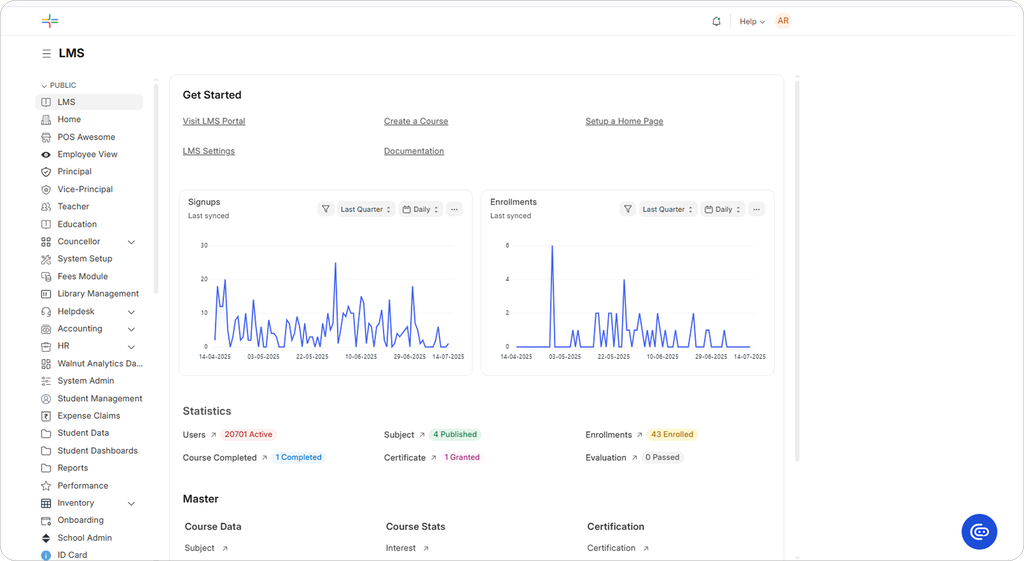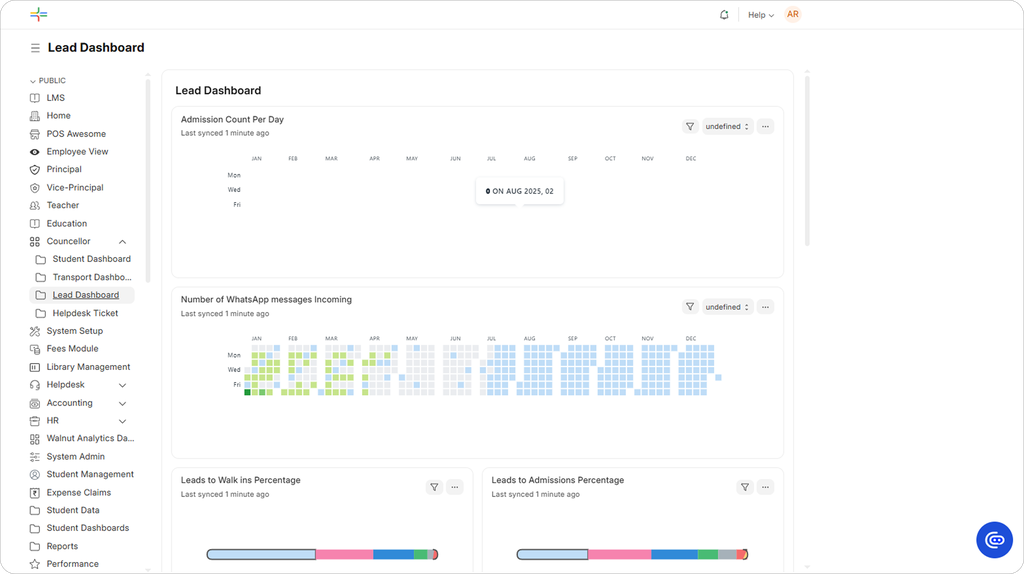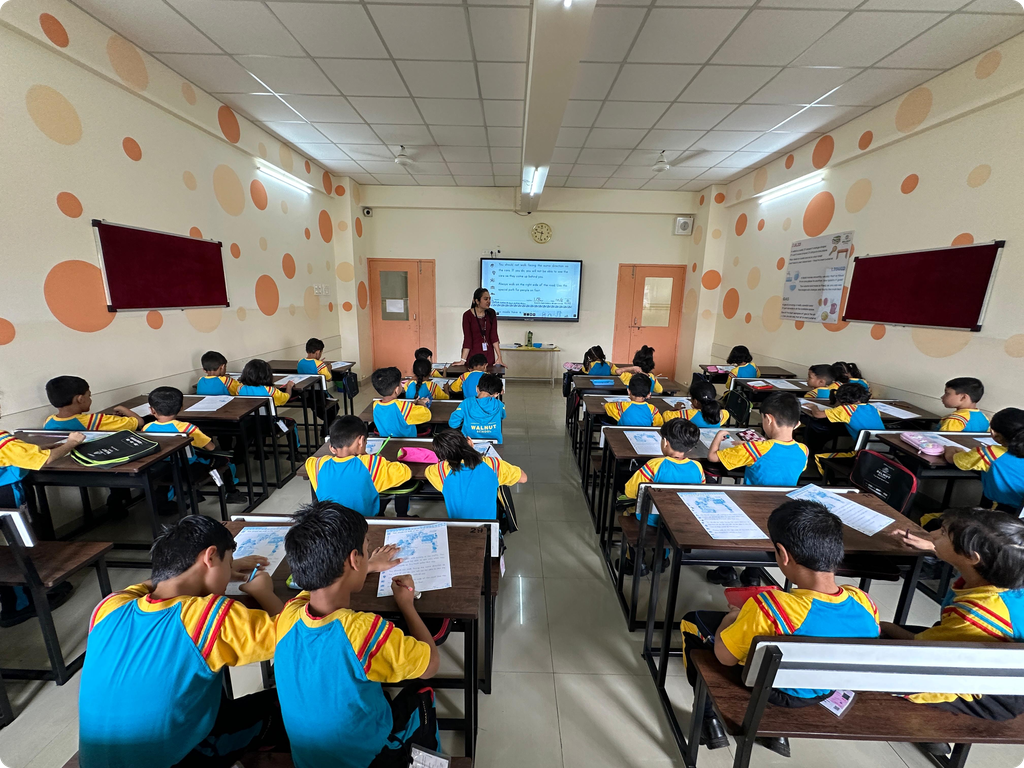This is a story of how Unity (by Effitrix) was born from the challenges of managing multiple educational campuses. As a school chain administrator at Walnut Education, I was drowning in disconnected systems that couldn’t scale across locations. Each system charged per user, required constant maintenance, and still couldn’t provide the cross-campus visibility we needed.
I knew there had to be a better way. I was looking for a platform which had an ecosystem around it, just like Tally. That is how I ended up with Frappe and ERPNext. I saw tremendous potential in the platform and decided to build on top of it.
So we built Unity, a comprehensive, source-available platform designed specifically for multi-location educational organisations. What began as a solution for our school network has evolved into a platform serving educational chains across India and the world.
 Unity LMS
Unity LMS There was a big question, though. Even though there were many ready-made ERPs in the market, why did we choose to “reinvent the wheel”?
There are so many reasons!
I did not want to change my internal workflow: The first and most important fact is that by choosing available software, I would have to adjust my workflows and processes. Whereas it should be the other way around. It’s 2025, we need a modern and efficient system that is not too bulky for change.
There was no system that understood our context: There is no ERP or LMS which really understands our problems in schools. We have many stakeholders in educational institutions. Students who are 3 to 18, parents, teachers and non teaching staff. People move in and out of the system, make mistakes, and have to fill hundreds of compliance documents, all while maintaining a consistent academic quality and brand value.
I did not want to use 10 different products: I evaluated many different offerings, from cheap ones to the premium products. They all seemed like birds of the same feather, with varied packaging. Not one offered a complete solution. There were ERP products to “manage” students, fees, exams, libraries, transport, etc. There was an HRMS payroll product to manage attendance and payroll. There was also a CRM product for admissions, along with an LMS for quizzes and online lectures. Then came the Google Workspace, Tally, and other single-use products. This would leave me spending all my time as a technology coordinator. If I had to implement all these products, I was going to waste time figuring out integration issues between all the systems. No system satisfied all our requirements.
Pricing: Most of these products were asking me to pay per student/user. This was quickly going to turn unsustainable for many reasons. When I researched more options, I came across Frappe and ERPNext, which claimed to be low-code. This piqued my interest. I reached out to the team at Frappe and realised that they had a great connected ecosystem of partners, and they operated on compute-based pricing.
When I went through the Frappe Framework, I was sold. I saw endless possibilities. So much so that I actually launched a separate company to help other educational institutions like mine to transition to the open-source ecosystem.
There were are the powerful benefits of a single platform:
- Zero fragmentation: no jumping from one tool to another
- All your data in one place
- Meaningful and contextual analytics
- Complete control of compliance, security and scalability
- Consistent branding and communication via a multi-channel approach
- Savings on human resources and investment in technology
This might sound like a dream, but for Walnut Education, this is very real and is running successfully in multiple chains of schools, kindergartens and tuition chains.
 Walnut Education's Staff
Walnut Education's Staff Next, I want to mention a few features that have enabled a stress-free experience for our teams.
- Lead generation: a user customizable chatbot, automated status changes, lead journey tracker and conversion tracking.
- Multi-year setup: Having multiple academic years running in parallel enables a complex admissions process.
- Multi-company, multi-school: Can accommodate multiple companies running multiple schools for easy fee collection.
- Fees: Multiple account heads, multiple instalments, partial payments, payment gateways, NBFCs, India compliant accounting, instant reports, concession varieties and discount varieties.
- ID cards: Customizable, QR-based automations for student attendance, photos, card generation, tracking of printing and delivery, allergy tracking.
- Flexible assessments: Have any number of exams, totally customizable report cards, with different modes of assessment like descriptive, objective, and OMR.
- Curriculum Management: Question paper generation, curriculum maps for period-wise content management and distribution
- Attendance: A close connection between transport attendance, early pick-ups, and late drops
- Events: Create events with customizable forms for registrations, collect event fees, and generate instant certificates
- Rollovers and exit: Automatically process financial and academic rollovers, mark student exits in bulk and generate bulk leaving certificates
 Unity's Lead Tracker
Unity's Lead Tracker This is just a small subsection of what we built in addition to the typical modules that are available in any educational ERP. I hope this gives an idea of the depth of thought that has gone into creating each of these workflows.
A friend of mine once told me something insightful: Anyone can implement an ERP, but no one can implement an ERP with all the nuances that bring users joy. That statement perfectly embodies what we are trying to achieve via this customisation of ERPNext for educational purposes.




